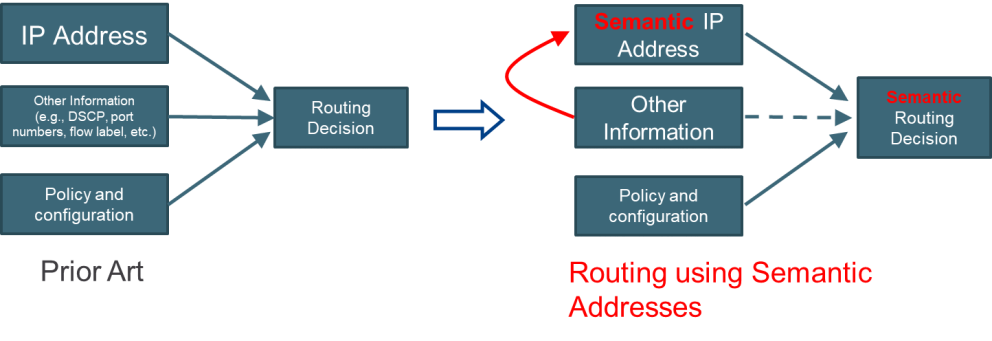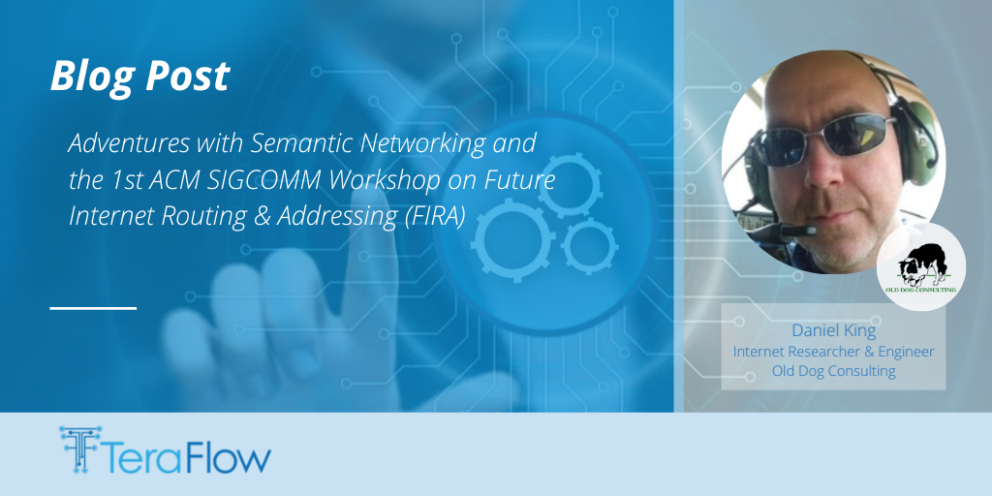Applications are placing increasingly sophisticated demands on the network for better quality, more predictability, and greater reliability. Some of these applications are futuristic predictions (for example, holographic conferencing and expansive virtual reality worlds), while others are already seeing actual network demands (such as multi-player augmented- or virtual-reality games). This coincides with a growing trend to extend end-to-end communications to include machines, moving objects (such as cars), highly virtualised and replicated services or new environments (such as 5G), manufacturing, or space networking, while increasingly aiming at optimising the operations of the networking environment in which the communication takes place. This has led to semantic enhancements to extend the most basic packet delivery mechanism, reflected in routing and addressing behaviours, often specific to a particular use case and set of application traffic requirements or networking characteristics.
Recent posts
To differentiate all the traffic existing and emerging types, the Internet uses Internet addressing for reachability and traffic handling. An Internet packet has a destination IP address; the routing engine finds the least cost path to the destination. As IP networks evolve, we can use additional packet fields and apply context when processing packet header information for routing decisions. Typically, this is performed using techniques driven by the user, application and operator policies and economics. These mechanisms have been aimed at resolving specific problems applied to individual technologies or intended for use in walled gardens or limited domains. Some of these techniques have seen successful (if limited) adoption and deployment (for example, Differentiated Services), some are on the cusp of fulfilling their potential (for example, Segment Routing), and some were just research projects or blind alleys. Each idea has been targeted at a specific function or behaviour and developed in isolation from other solutions making for a complex arrangement of stovepipes in deployment and a mess in router codebases.

Semantic Networking is the process of routing packets that contain IP addresses with additional semantics, possibly using that information to perform policy-based routing or other enhanced routing functions. Thus, facilitating enhanced routing decisions based on these additional semantics and providing differentiated paths for different packet flows, distinct from simple shortest path first routing. The requirements and challenges for Semantic Networking are discussed further in the TeraFlow IETF Internet-Draft [king-irtf-introduction-challenges-in-routing]. An introduction to Semantic Routing is provided in the IETF Internet-Draft [farrel-irtf-introduction-to-semantic-routing].
In August 2022, TeraFlow members organised the 1st ACM SIGCOMM Workshop on the Future of Internet Routing & Addressing (FIRA). The FIRA workshop brought academic, industry and research communities together to discuss varying architectural views on how routing and addressing, including Semantic Networking, ought to evolve. It investigated and expanded the boundaries of what can be achieved by introducing new architectures rather than point solutions, those architectures extending existing or inventing new routing and addressing techniques that modify the default forwarding behaviour to be based on other information present in the packet, said behaviour being either configured policy or dynamically programmed into the routers and devices.
During the FIRA workshop, two peer-reviewed papers from TeraFlow members were also presented:
Overall, the FIRA workshop demonstrated a need to continue investigating and researching the growing demand for traffic differentiation without network overlay techniques' protocol overhead, cost, and operational complexity. Early demonstrations and prototyping of semantic networking techniques may eventually find their way into Internet architecture and routing.
The FIRA workshop proceedings and all accepted papers have been made freely available. They cover a variety of use cases, design principles, architectures, techniques, implementations, and experience insights that address the highlighted objectives:
If you would like to participate in the Semantic Networking discussions, there is an IETF mailing list you can join.
